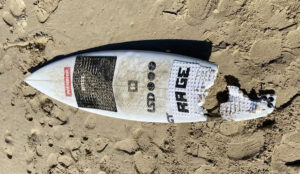BY JUAN HERNANDEZ
A version of this story first appeared in The Inertia.
Nat Young has enjoyed a relatively successful career as a professional surfer. He came onto the Championship Tour scene with a tremendous rookie campaign in 2013 and sprinkled in some near-wins over the next few years.
While he did eventually fall off the full-time tour roster, Young fought his way back onto the Tour in 2021 via the Challenger Series. All said, the Santa Cruz native won enough heats through the years to sustain a decade-long run on, or within reach, of surfing’s elite tour. That’s nothing to scoff at.
He also arrived on that stage at a time before the surfer-content creator hybrid was the dominant route for professional talents. His career path followed the old school get a main sponsor, go win heats, and score the occasional magazine cover blueprint that ran surfing when print was still a part of the game.
That makes Young an interesting mind to pick on the topic of making a living as a professional surfer. How much money would an athlete make in terms of prize money and sponsorships in that mold of a pro surfer?
Top 10 surfers roll in money; the rest scramble
“There’s probably 10 guys in the world that make a lot of money,” Young told the Athletes & Assets podcast. “Nowhere near baseball or basketball money or football money, but upwards of a million dollars,” adding that “I guarantee if you took that money away they’d still be doing it.”
The podcast conversation is an interesting one, in that Young offers firsthand insight into how much the industry and the profession have changed over the past decade-plus.
Family help
“Kelly [Slater]’s probably the top dog,” says Young, “but he’s also in a league of his own in terms of his name.”
He goes on to explain that some of the athletes he’s seen succeed financially were often working on that prize money and competitive success for investment capital. Young says his mother helped manage his finances when he was competing because “all I knew was how to surf.”
Then, when he was 23, he bought an apartment complex in Santa Cruz. He’s continued investing in real estate in the area, which, if you’ve ever looked at housing in the Bay Area, you know has paid off.
“I’m thankful because Santa Cruz is insanely expensive. Nowadays it’s ridiculous.”






